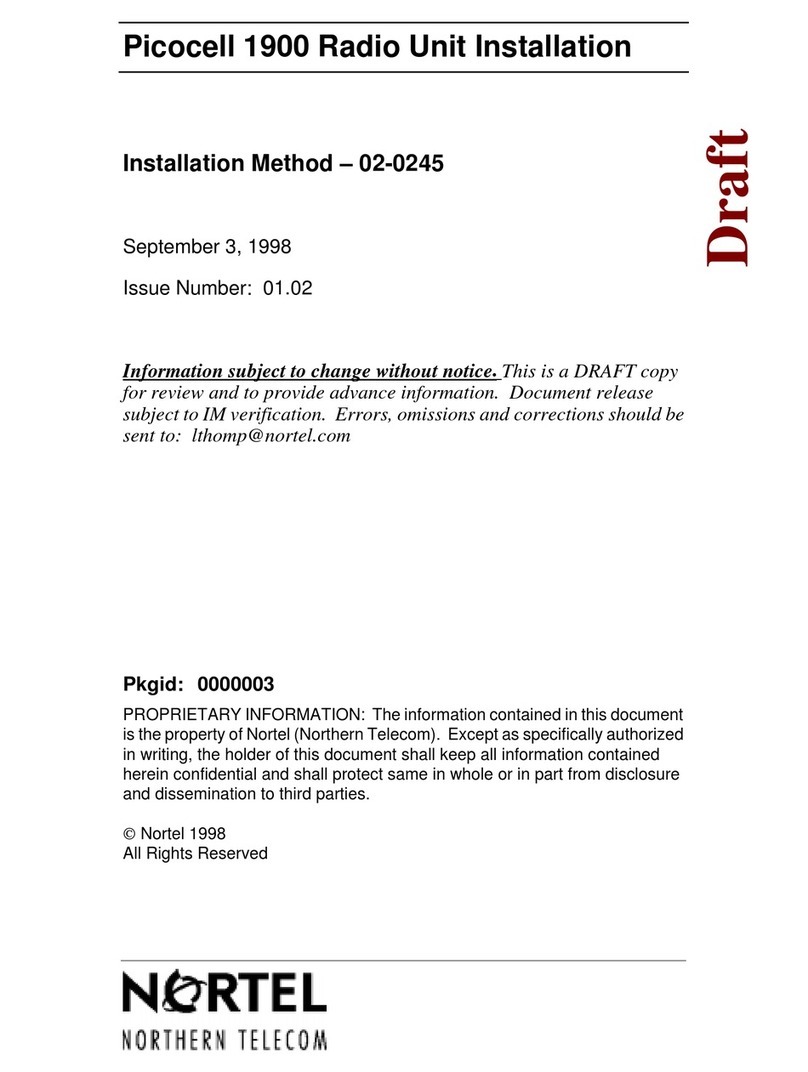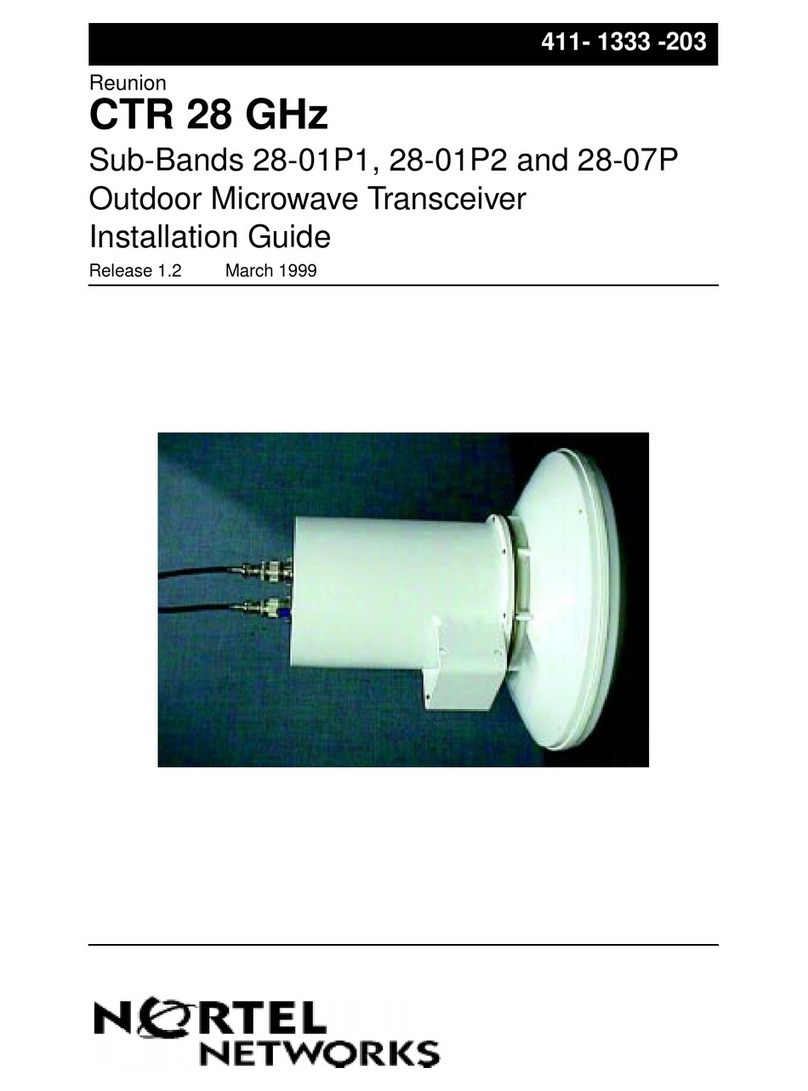viii
411-1333-200 Preliminary July 1998
Organization1. This Guide is divided into seven sections:
•Product Overview describes the BTR’s components and theory of
operation.
•Pre-Installation describes the basics of handling the equipment upon
arrival.
•Reunion Safety Standards provide a quick review of general safety
guidelines.
•Installing the BTR 2400 explains how to physically install the transceiver.
•BTR 2400 Maintenance describes basic maintenance procedures to ensure
that the transceiver is operating correctly.
•BTR 2400 Diagnostic Reference Chart provides a quick troubleshooting
guide.
•List of terms provides a quick reference to terms and acronyms found in
the guide.
Customer Support
In addition, Nortel Broadband Wireless Access (BWA) provides 24-hour
customer service and technical support to ensure your service operation is
trouble-free. If you have questions or need technical support, contact Nortel
Broadband Wireless Access at the following telephone numbers:
• In the USA and Canada, call toll free 1 (800) 822-6355
• Outside of North America, call (204) 631-2250
• Fax (204) 631-2475
Write Nortel at:
• Nortel
Broadband Wireless Access
37 Stevenson Road
Winnipeg, Manitoba R3H 0H9
Canada































